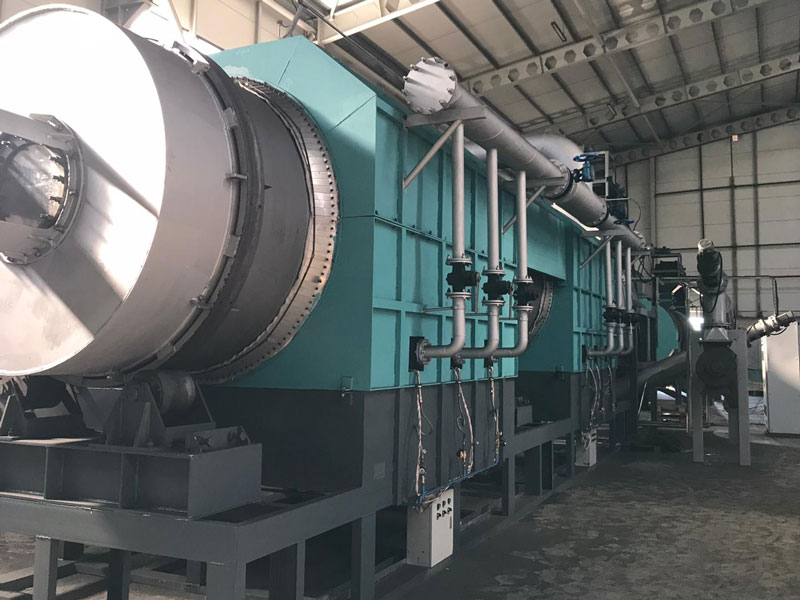In the realm of sustainable energy production, the advent of biomass pyrolysis has emerged as a promising avenue, offering a potential solution to mitigate the environmental toll exacted by traditional energy sources. This innovative process involves the thermal decomposition of organic materials, yielding biochar, bio-oil, and syngas. While it holds the promise of a renewable energy future, the biomass pyrolysis plant is not devoid of environmental intricacies.
Genesis of Biomass Pyrolysis
To comprehend the environmental dynamics at play, it is imperative to delve into the genesis of biomass pyrolysis plant. Unlike conventional energy extraction methods, this technique harnesses the transformative power of heat in the absence of oxygen. The thermal breakdown of biomass results in a trifecta of valuable byproducts, each possessing unique applications in the renewable energy landscape.
Biochar: A Carbon Sink or Source?
One key output of biomass pyrolysis is biochar – a carbon-rich material touted for its potential to sequester carbon dioxide from the atmosphere. In theory, this could act as a formidable tool in the fight against climate change. However, the intricacies lie in the long-term carbon dynamics of biochar. Does it serve as a steadfast carbon sink, or does it eventually revert to being a carbon source?
Research suggests that the fate of biochar hinges on various factors, including soil type, climate, and the type of biomass utilized. While it holds promise as a carbon sequestration method, a comprehensive understanding of its behavior across diverse environments remains imperative.
Bio-oil and Syngas: The Versatile Twins
Simultaneously, biomass pyrolysis begets bio-oil and syngas, both heralded for their versatility. Bio-oil, a liquid substance derived from the process, finds applications in bioenergy, potentially replacing fossil fuels. However, the challenge lies in refining the production process to enhance the yield of high-quality bio-oil while minimizing undesired byproducts.
Syngas, a gaseous amalgamation of carbon monoxide and hydrogen, serves as a precursor for biofuels and various industrial processes. Yet, the synthesis of syngas in a biomass carbonization machine demands a meticulous optimization of operating conditions to achieve maximal efficiency.
Environmental Footprint of Biomass Pyrolysis Plant
Carbon Neutrality and Beyond
Advocates of biomass pyrolysis emphasize its potential to achieve carbon neutrality, positing that the carbon released during combustion is offset by the carbon sequestered during biomass growth. However, skeptics raise concerns about the holistic environmental impact, pointing to emissions associated with the entire biomass charcoal machine life cycle.
Life cycle assessments (LCAs) become instrumental in gauging the environmental footprint. These assessments, though, necessitate a meticulous consideration of various parameters, including feedstock type, transportation, and operational energy inputs. Striking a delicate balance is essential to ensure that the touted carbon neutrality remains substantiated across the entire life cycle.
Air Quality and Emissions
While biomass pyrolysis holds promise in mitigating greenhouse gas emissions, the process is not devoid of emissions. Particulate matter, nitrogen oxides, and volatile organic compounds emerge as potential byproducts, raising concerns about air quality. Scrutiny of emission control technologies within a biomass pyrolysis plant becomes imperative to uphold the environmental integrity of the process.

Regulatory Landscape and Technological Advancements
The environmental impact of biomass pyrolysis is intrinsically tied to the regulatory frameworks governing its implementation. Robust regulations are crucial to ensure adherence to emission standards, proper waste disposal, and sustainable sourcing of biomass feedstock. A harmonious blend of stringent regulations and technological innovations can pave the way for the widespread adoption of this eco-friendly energy production paradigm.
Striking a Delicate Balance
In the quest for a greener planet, the importance of biomass pyrolysis as a renewable energy source cannot be overstated. However, it is paramount to approach this innovation with a discerning eye, acknowledging its potential while meticulously addressing the environmental nuances. The biomass pyrolysis plant must be a bastion of technological prowess, employing cutting-edge advancements to optimize efficiency, reduce emissions, and minimize its ecological footprint.

Conclusion: Navigating the Environmental Maze
The environmental impact of biomass pyrolysis is undeniably a complex tapestry, woven with threads of promise and intricacy. As the world grapples with the imperative shift towards sustainable energy, the biomass pyrolysis plant stands as a beacon of hope. However, the journey toward a greener planet demands an unwavering commitment to environmental stewardship – a commitment that necessitates continual scrutiny, regulatory diligence, and technological innovation. Only through such a meticulous balancing act can biomass pyrolysis emerge as a transformative force, steering us towards a future where energy production harmonizes with ecological preservation. Find out more about what we do by visiting our website, Beston Group.